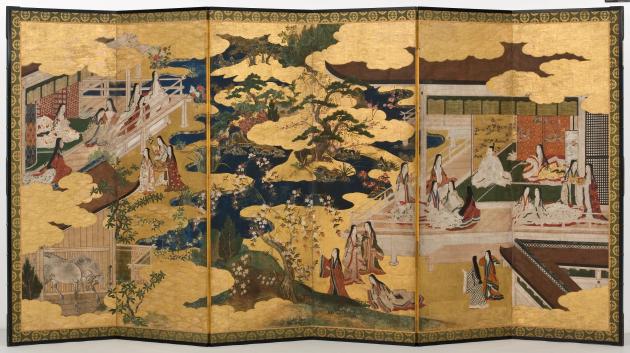
Spring and Summer Palace Gardens, from The Tale of Genji; 17th century; six-panel folding screen; ink, color, and gold on paper; Overall 67 × 141 inches (170.2 cm × 3 m 58.1 cm); Detroit Institute of Art, City of Detroit Purchase, 27.541
807 Schermerhorn Hall
RSVP mandatory by October 13 to receive QR code for campus entry. RSVP to Midori Oka: mo2486@columbia.edu. This lecture will be both in-person and on Zoom. Click here to register for Zoom.
In producing Tale of Genji paintings, the choice of scenes and episodes to depict as well as how to portray them were major challenges. The pictorial quality or legitimacy of the narrative understanding of texts led to the standardization of patterns, and such graphic traditions at times held more normative power than the original texts. This was particularly noticeable in smaller-scale Genji paintings from the Muromachi to the early Edo periods. What about in the case of larger-scale folding screens? This lecture will introduce Tale of Genji screens from the late 16th to the 17th centuries and their new and distinct visual methods that departed from previously established pictorial systems.
